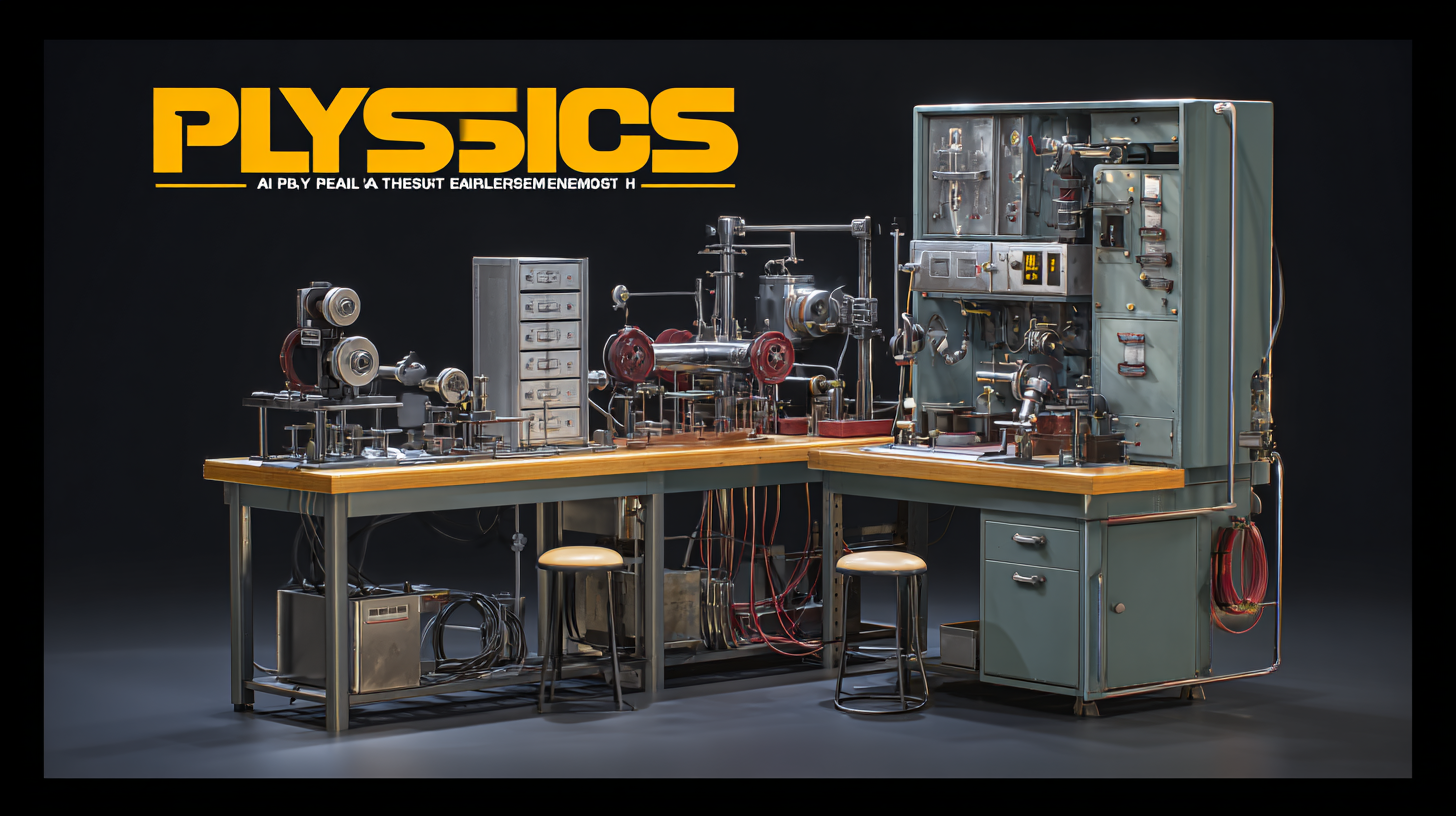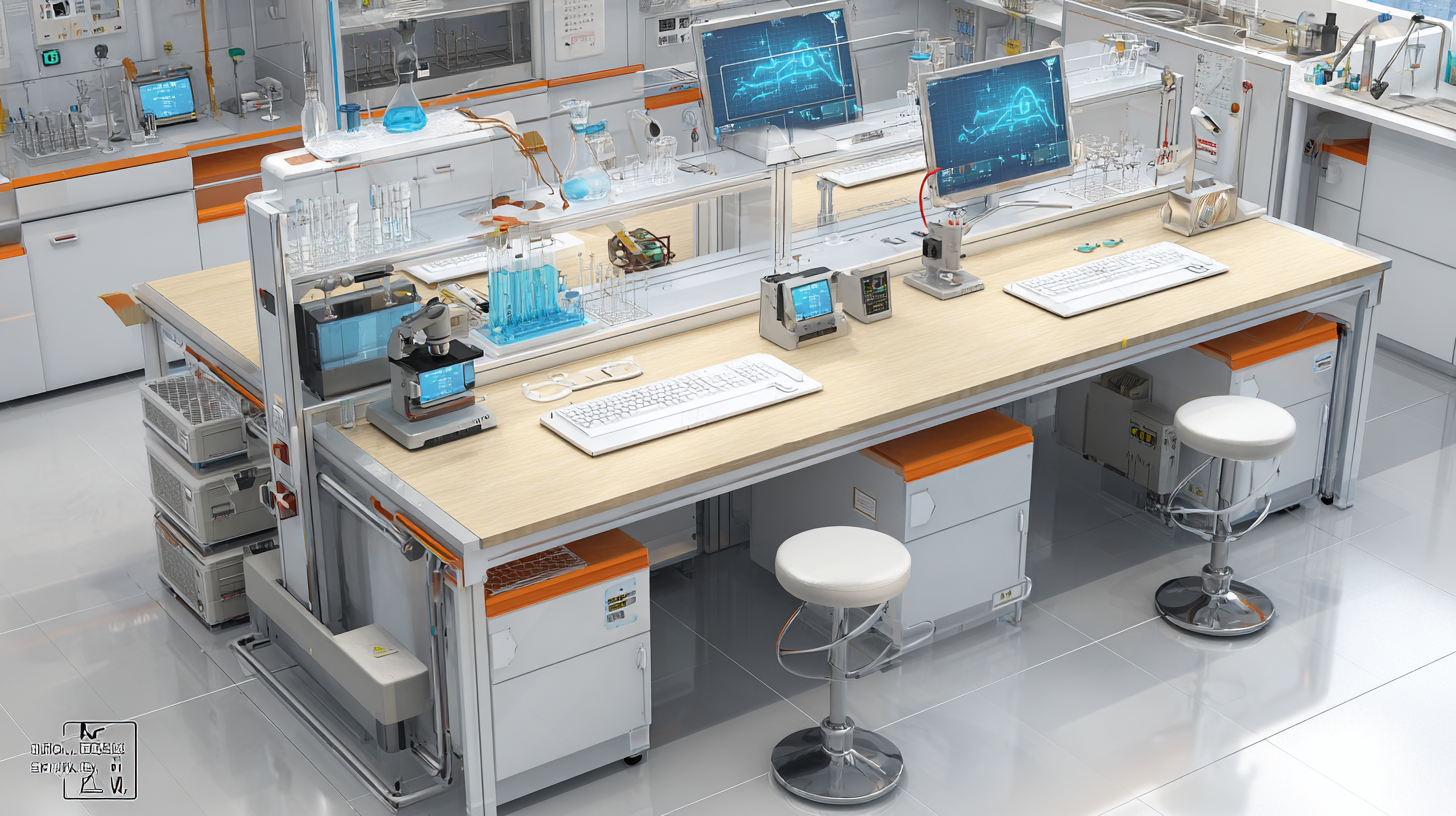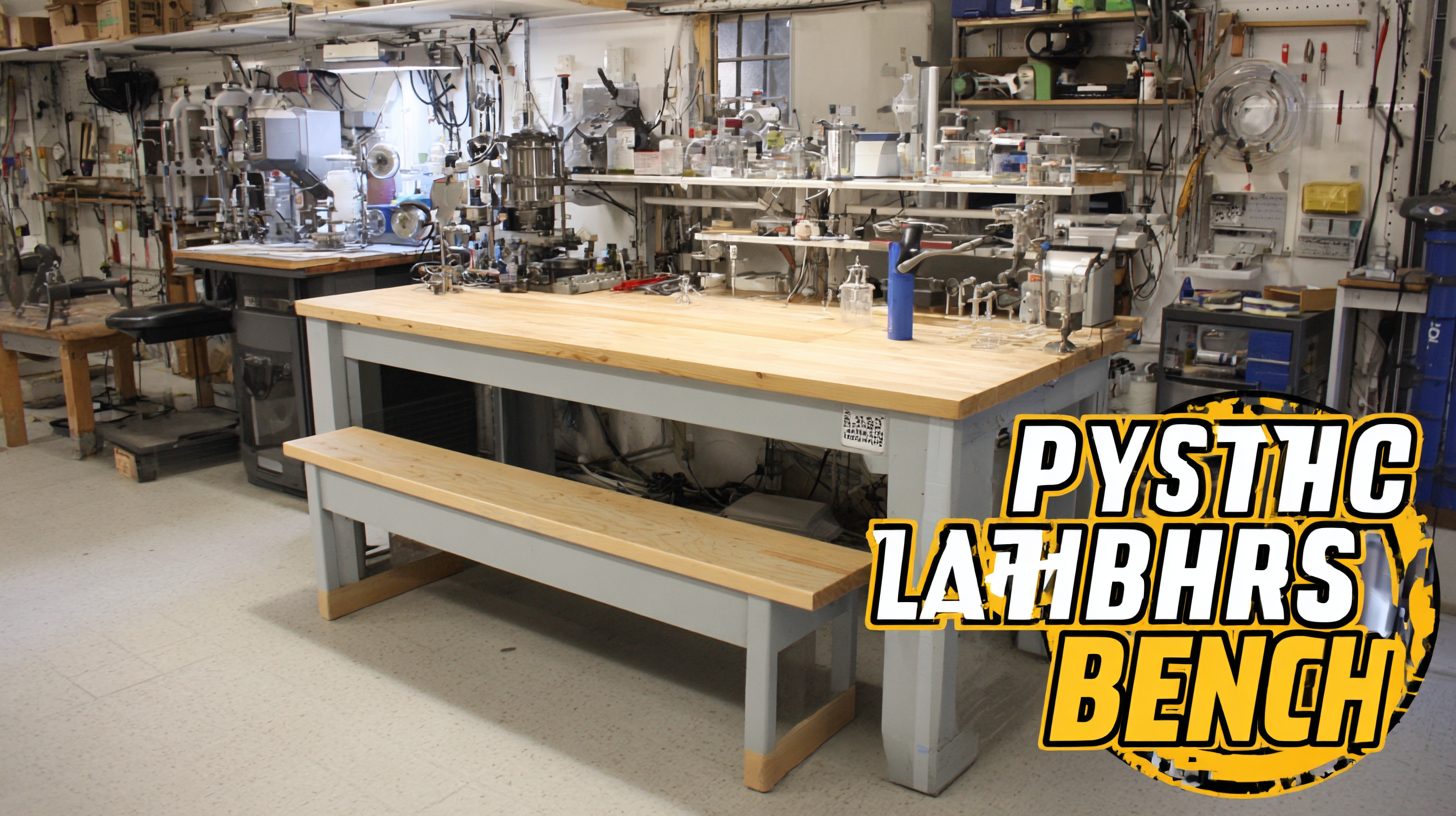In the realm of scientific experimentation, the choice of equipment can significantly influence the quality and outcome of research. This is especially true for the Physics Laboratory Bench, a fundamental piece of furniture that supports a vast array of experiments across various disciplines. As the demand for high-quality laboratory equipment surges globally, manufacturers are stepping up to produce advanced Physics Laboratory Benches that not only meet but exceed international standards. With China's manufacturing capabilities evolving rapidly, we see a commitment to quality enhancement that caters to the needs of laboratories worldwide. This blog aims to explore the essential features of the best Physics Laboratory Benches, highlighting their importance in optimizing experimentation and ensuring precise results in an increasingly competitive scientific landscape.

When choosing a high-quality physics laboratory bench, there are several key attributes that should be prioritized to ensure optimal experimentation. First and foremost, stability and durability are essential. A well-constructed bench made from sturdy materials will not only withstand the rigors of daily use but also provide a stable platform for intricate experiments. This stability is crucial when working with delicate instruments, as even minor vibrations can lead to inaccurate results.
Another important feature to consider is the versatility of the bench. Modern physics experiments often require flexibility in design and functionality. A bench with customizable features, such as adjustable height or modular components, allows researchers to adapt their workspace to fit various experimental setups. This adaptability can significantly enhance productivity and creativity in the laboratory environment.
Moreover, the incorporation of advanced technological integrations should not be overlooked. As research evolves, the need for data collection and analysis becomes paramount. A laboratory bench that facilitates easy access to power sources, networking options, and data management tools can enhance the efficiency of experimentation, aligning with trends in AI for Science where high-quality data is crucial. Selecting a bench with these essential features will ultimately support a more effective research process, enabling scientists to push the boundaries of physics knowledge.
When designing an optimal physics laboratory bench, the importance of stability and durability cannot be overstated. Stability is vital for ensuring accurate and repeatable experimental results. For instance, in advanced research such as continuous dehydrogenation using LOHC compounds, maintaining stability throughout the reaction process significantly affects the performance of catalysts. Any fluctuations in the experimental setup can lead to variations in results, compromising the integrity of the research. Therefore, a laboratory bench that minimizes movement and vibrations allows researchers to focus on their experiments without concern for external interference.
In addition to stability, durability plays a critical role in the longevity and reliability of laboratory equipment. Environments with varying humidity, temperature, and frequent usage can weaken subpar materials over time. For example, investigations into the long-term performance of nanofluidic devices reveal that robust construction is essential for their effective application in single-molecule sensing. A well-designed laboratory bench that combines both high durability and stability will not only withstand the rigors of experimental demands but also support pioneering research across disciplines, from renewable energy systems to medical robotics. Thus, investing in quality laboratory furniture is paramount for fostering innovative scientific discoveries.
 When designing the best physics laboratory bench for optimal experimentation, understanding the optimal dimensions and design features is crucial. A well-structured lab bench should not only accommodate various experimental setups but also facilitate seamless integration of advanced tools such as physics-informed optimization algorithms. These algorithms have shown great potential in enhancing experimental accuracy and efficiency in fields ranging from material design to quantum optics. For instance, optimizing dimensions in designs, including those for NiTi shape memory alloys, demonstrates how intricate design specifications can significantly impact performance in real-world applications.
When designing the best physics laboratory bench for optimal experimentation, understanding the optimal dimensions and design features is crucial. A well-structured lab bench should not only accommodate various experimental setups but also facilitate seamless integration of advanced tools such as physics-informed optimization algorithms. These algorithms have shown great potential in enhancing experimental accuracy and efficiency in fields ranging from material design to quantum optics. For instance, optimizing dimensions in designs, including those for NiTi shape memory alloys, demonstrates how intricate design specifications can significantly impact performance in real-world applications.
Moreover, as the field of physics continues to evolve, incorporating data-driven approaches into laboratory setup is becoming increasingly important. Reports indicate that integrating simulations with experimental designs can lead to the discovery of high-performance materials and enhance the understanding of complex variables in experiments. The development of machine learning strategies tailored for high-precision needs is transforming how experimenters approach challenges, such as creating sustainable polymers for solvent separations. Adopting optimal design features not only improves laboratory functionality but also drives advancements through automated, physic-informed methodologies, paving the way for innovations in traditional physics experimentation.
When designing an effective physics laboratory bench, the choice of materials and surface finishes plays a crucial role in optimizing experimentation. High-quality surfaces not only enhance the durability of the bench but also influence the overall laboratory environment, including air quality. Recent studies have highlighted the significance of evaluating volatile organic compounds (VOCs) and formaldehyde (HCHO) emissions from various furniture finishes. These emissions can severely impact indoor air quality, making it imperative to select finishes that minimize harmful off-gassing.

For laboratory benches, materials such as high-density polyethylene, stainless steel, and laminate surfaces are recommended due to their resistance to chemicals and ease of cleaning. Additionally, the surface finish methods should be carefully considered; finishes that are low in VOCs and HCHO emissions contribute to a healthier working atmosphere. Opting for low-emission coatings not only protects the health of lab personnel but also maintains the integrity of sensitive experiments, ensuring reliable and accurate results. As the understanding of environmental factors in laboratory settings grows, prioritizing material and surface choices has never been more critical for optimal experimentation.
In a modern physics laboratory, effective storage solutions are crucial for enhancing efficiency and maintaining organization. A well-designed laboratory bench should incorporate innovative shelving and drawer systems that maximize the use of space while ensuring easy accessibility to tools and materials. For instance, modular shelving can be customized to accommodate various sizes of equipment and supplies, enabling researchers to optimize their workflow during experiments.
Another important aspect of storage solutions is the integration of digital systems for inventory management. By utilizing smart technology, such as RFID tagging or inventory software, lab managers can keep track of materials in real-time, reducing time spent searching for items and minimizing the risk of loss. Additionally, clear labeling and dedicated zones for specific types of equipment not only help in maintaining order but also foster a collaborative environment where team members can work seamlessly together. Ultimately, these innovative storage strategies significantly contribute to a more productive laboratory experience.
| Feature | Description | Benefits | Examples |
|---|---|---|---|
| Adjustable Height | Bench height can be modified to accommodate different users. | Promotes ergonomic working conditions and comfort. | Electric height-adjustable models. |
| Durable Surface Material | Materials such as laminate or epoxy resin for chemical resistance. | Ensures longevity and protects against spills and stains. | Epoxy resin-coated surfaces. |
| Storage Solutions | Integrated shelves, cabinets, and drawers for organization. | Enhances efficiency by reducing clutter and easy access to materials. | Drawer units and shelving systems. |
| Power and Data Access | Access points for electrical outlets and USB ports. | Facilitates the use of electronic equipment and data collection. | Built-in power strips and data ports. |
| Safety Features | Incorporation of features such as rounded edges or non-slip surfaces. | Reduces accidents and injuries during experiments. | Benches with rounded corners and rubberized grips. |
